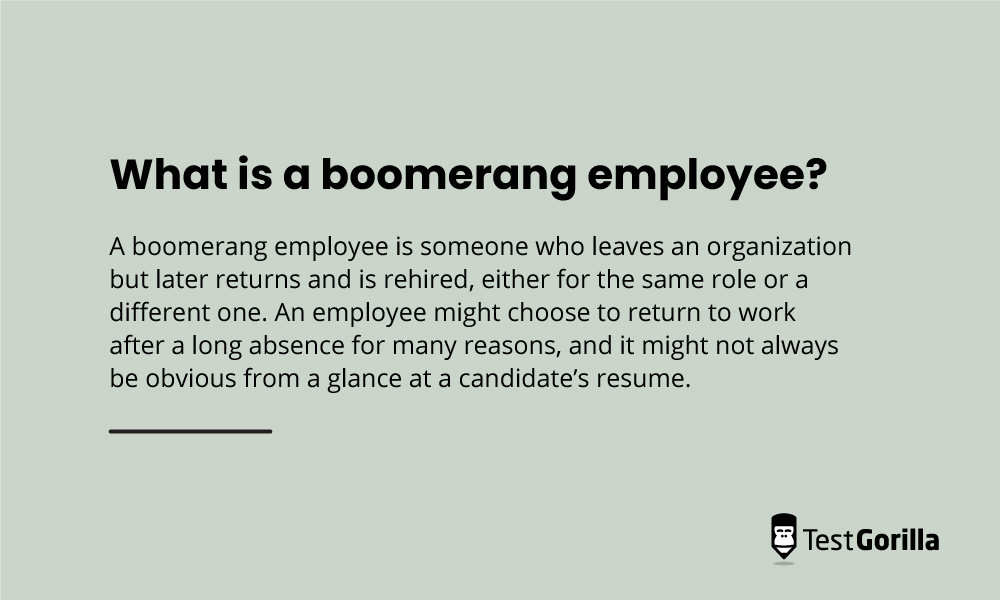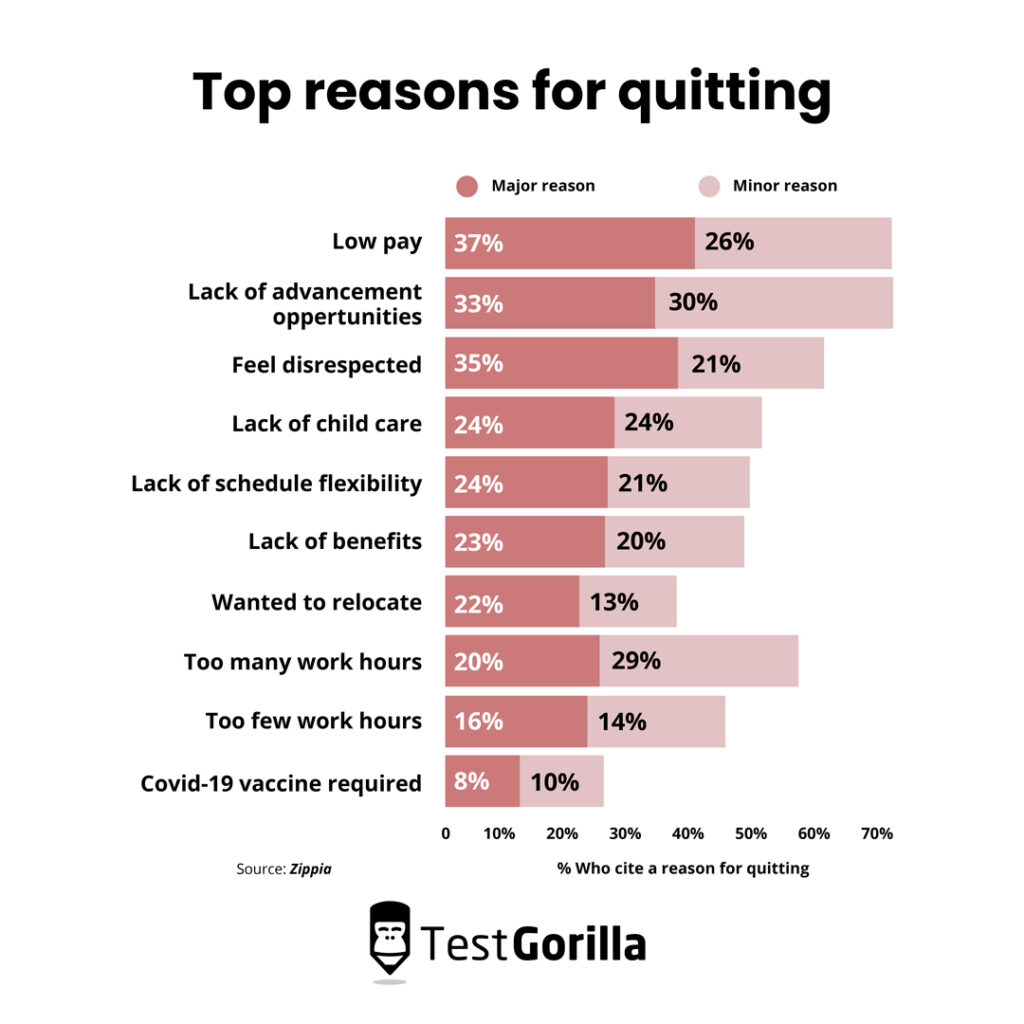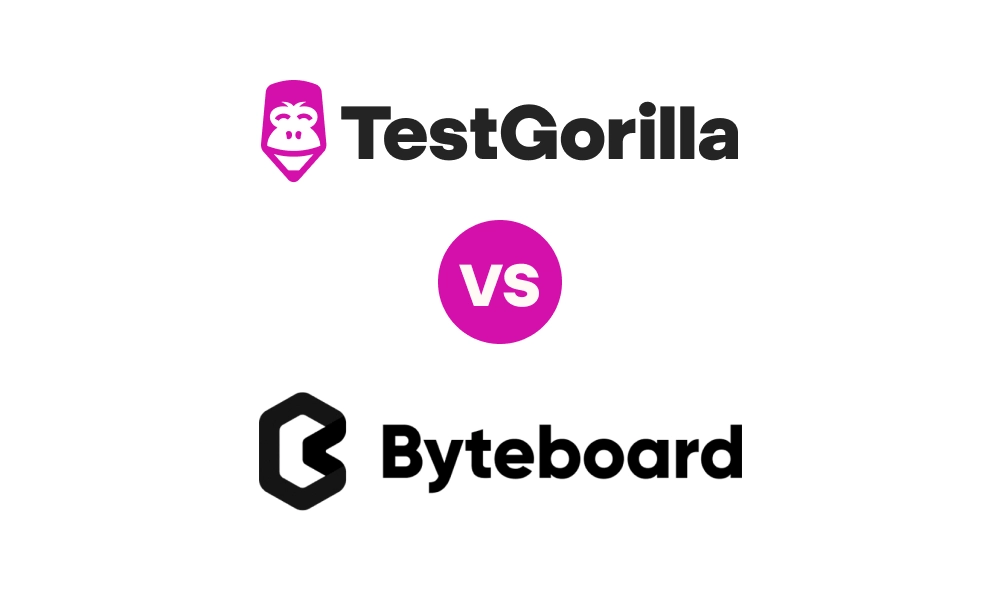Boomerang employees: How to leverage this talent acquisition trend and hire staff with proven track records
Received wisdom says that if you love something, you should let it go. The question in hiring is: Should you let it come back?
Increasing numbers of “boomerang employees” are returning to companies after leaving, whether they resigned to seek new pastures or were let go in a round of restructuring.
There are obvious benefits to hiring a candidate with a proven track record at your organization. But is it safe to pick a boomerang employee over an equally motivated new candidate, or will history just end up repeating itself?
In this blog, we tell you everything you need to know about boomerang employees and how to fit them into your talent acquisition strategy.
We discuss the pros and cons of boomerang employees, statistics about boomerang employment, and best practices to take advantage of this talent acquisition trend.
But first, what is a boomerang employee?
Table of contents
- What is a boomerang employee?
- Why are boomerang employees important?
- The benefits of boomerang employees
- The drawbacks of hiring boomerang employees
- 7 best practices to get the benefits of boomerang employees without the risks
- Boomerang employees: 3 examples of companies succeeding with this talent acquisition trend
- Skills-based hiring ensures boomerang employees are back for good
What is a boomerang employee?
A boomerang employee is someone who leaves an organization but later returns and is rehired, whether they are returning to the same role or joining in a different one.
An employee might choose to return to work after a long absence for many reasons, and it might not always be obvious from a glance at a candidate’s resume. For example, they might leave due to caregiving responsibilities or long-term health issues.
What causes boomerang employees to leave and return?
The Society For Human Resource Management identifies several common reasons for employees “boomeranging” back to a previous employer:
Type | Definition |
Traditional | They work for a company for a few years but see opportunities to develop their skills elsewhere. They usually return to the original organization later on and for more pay. |
Life event | They leave because of personal reasons outside of their control – for instance, a spouse being relocated or needing to care for a loved one. |
Planned or seasonal | Boomeranging is always part of the plan. They might be a student who works during summer break or an adult who is spending an extended period of time elsewhere. |
“Itch to scratch” | They leave for a new challenge or because they need to try out a different career path, but quickly realize it’s not for them.[1] |
Why are boomerang employees important?
What makes boomerang employees an important talent acquisition trend to pay attention to now?
After all, the Harvard Business Review was extolling the virtues of the boomerang employee in 2013, a full decade ago.[2]
There is some evidence that the number of boomerang employees is growing year by year. In 2021, 4.5% of new hires were boomerang employees, up from 3.9% in 2019.[3]
This trend has likely been fueled by the coronavirus pandemic, with people leaving their roles after lockdown because they:
Discovered they preferred working from home and were looking for flexibility in the workplace
Expanded their side hustle by going into business for themselves (despite its hardships, the pandemic fueled a “startup frenzy”)
Went back to school to retrain in a different career
This suggests that although boomerang employees are not quite “commonplace” in the workforce, they are more common than they have been in previous decades.
It is also unlikely this trend will disappear any time soon. The shift from long-term loyalty to employers to the more frequent job-hopping practiced today, particularly by millennials, sets the stage for increasing numbers of boomerang employees in the future of work.
For employers, this means you need a firm approach in place to deal with a future in which careers are increasingly nonlinear.
Before, boomerang employees could be evaluated on a case-by-case basis; now, organizations should consider creating a rehiring policy similar to this one by Workable. This kind of documentation can reduce friction for hiring managers and improve talent acquisition.
For employees, having a clear understanding of their organization’s stance on boomerang employees gives them better insight into their career options and may encourage greater initiative and ambition.
It also brings social benefits for employees with former colleagues returning to the fold, and it gives them confidence that they can explore their career options outside of the organization without burning any bridges.
The benefits of boomerang employees
Now that we’ve covered what a boomerang employee is and why they’re important to discuss right now, it’s time to cover boomerang employees’ pros and cons.
There are several boomerang employee benefits for employers:
1. They already know your company
Retaining institutional knowledge is key to organizational health, and boomerang employees come with it built in. They can then share this with new employees.
2. They bring with them updated skills, experiences, and connections
This could even extend to bringing in new business, for example, if a boomerang employee left to become freelance and brings back new clients.
3. They may integrate into the team and culture more easily
Even if it’s been years since they last worked at your organization, their familiarity with its values and processes can help them assimilate. Research shows boomerang employees are usually more satisfied and committed than external hires.
4. They have an easier onboarding process
You can move through your onboarding checklist faster because boomerang hires leverage pre-existing knowledge, relationships, and networks. This also makes your onboarding process much more cost-effective.
5. When done right, there is a lower risk of making a bad hire (and swallowing the associated costs)
To hire a replacement when an employee leaves generally costs about one-third of that employee’s salary – that means replacing a worker with a $70,000 salary would cost more than $23,000.[4]
In theory, a boomerang employee already knows your business well enough to assess their own fit; if you hold up your end of the bargain by following the best practices below, your overall risk of a mis-hire is lower.
6. They might even be able to help you improve talent acquisition and retention
Boomerang employees are a good sign for your culture. Providing a work environment that’s so good people keep returning to it is great for your employer brand and attracting new employees.
What’s more, boomerang employees offer insight into the company’s limitations, because these likely played a part in why they left in the first place. This can help you improve your culture so that fewer people leave in the first place.
The drawbacks of hiring boomerang employees
After the boomerang employee benefits we’ve outlined above, you might be tempted to fully embrace boomerang employees and create a “revolving door” system in your organization.
But wait a minute: There are a few drawbacks you should know about first.
1. Bias might sway your decision
When we talk about interviewer bias in hiring, we tend to focus on gender and racial bias, but it also comes into the picture when considering whether to hire a boomerang employee.
If boomerang employees have a pre-existing relationship with your hiring manager, this could be an unfair advantage.
2. If the reason they left hasn’t been resolved, history could repeat itself
If a boomerang employee left to pursue flexibility in another organization and you still don’t have a hybrid working policy, they could well leave again.
Likewise, if they left due to workplace conflict with an employee who’s still there, the same issue could reignite upon their return.
3. Even if they fit the company culture, they might not add to it
Especially if your company has changed direction since they last worked there, they might not bring in the new ideas or approach offered by a fresh candidate. In other words, they might not be a “culture add.”
4. Recurring boomerang employees cost money
Research has shown that a quarter of boomerang employees were high performers before they left their old jobs, and when they return to their companies, it’s for 25% higher pay on average.
Combined with the fact that three-quarters of companies worldwide are experiencing talent shortages, if a boomerang employee has an in-demand skill, a revolving door policy could be especially expensive.[5]
Fortunately, there are steps you can take to access the benefits of hiring boomerang employees and minimize the real risks of these drawbacks. Let’s discuss them.
7 best practices to get the benefits of boomerang employees without the risks
Here are seven best practices for how to incorporate boomerang employees into your hiring plan while minimizing the risks of old problems resurfacing.
7 best practices when hiring boomerang employees: Summary table
In a hurry? Here’s a quick summary of our best practices for hiring boomerang employees.
Best practices for hiring boomerang employees | Example actions |
1. Create a company culture that stands out from competitors | Encourage your leadership team to role model the company’s corporate identity in meetings and interactions with staff |
2. Build a positive offboarding experience | Use HR analytics to track and understand why employees are leaving in the first place – for instance, using exit questionnaires |
3. Keep in touch after employees leave | Create an active alumni community for boomerang employees to network and view job postings |
4. Reduce bias towards boomerang employees with skills testing | Use the same skills tests to evaluate all employees |
5. Address their boomerang status during final interviews | Ask boomerang employees what’s changed since you last employed them and why they want to come back |
6. Don’t cut corners: Reboard boomerang employees | Go through the same onboarding process as you would with a new recruit, explaining that it’s precautionary |
7. Prevent future boomerang employees by creating professional development plans for employees | Use the data you’ve collected during hiring to target employees’ weaker skill areas in professional development plans |
1. Create a company culture that stands out from competitors
The best way to encourage boomerang employees to return is with a dynamite company culture they’ll miss when they leave.
A cohesive culture can be created in any business, even if you operate under a remote or hybrid office model. It’s not only about employee wellness initiatives; it’s about putting yourself in the place of your employees and making sure that they:
Know you are invested in their individual growth
Are invested in your company’s mission and values
Are connected to one another
That last point is important. Studies show that the stronger a worker's social ties are to their former colleagues, the more likely they are to become a boomerang employee.
One way to create a positive culture is to encourage your leadership team to role model the company’s corporate identity, particularly in meetings and interactions with employees. This creates a sense of integrity and connection to the company's mission.
Creating a good company culture also encourages employees to stay longer with your organization, reducing the likelihood that employees leave in the first place.
2. Build a positive offboarding experience
It sounds counterintuitive, but part of building a supportive environment for employees to work in is creating an environment where they feel supported when leaving. Let us explain.
Many organizations operate on a culture of fear and secrecy around leaving, with employees afraid to voice their concerns or questions to management. This doesn’t stop employees from leaving; it merely limits employers’ ability to prepare or entice them back.
Instead, experts recommend employers begin employee offboarding programs at the moment of hiring, letting employees know you’re aware their career might take them elsewhere.[6]
This enables you to support and manage employees’ careers and engage in effective succession planning. It also leaves a positive impression that could turn leavers into boomerang employees.
First, use HR analytics to track and understand why employees are leaving in the first place. Draw from a variety of data, such as:
A questionnaire sent to employees upon receipt of their notice
Written feedback on your offboarding process when employees are about to leave
An exit interview either at the end of employment or, as recommended by some experts, some time after employees have left the company
Remember to listen to feedback from all leavers, not just the ones you’re sad to see go.
Resolving these issues can incentivize top talent to return to you should the opportunity arise, and also reduce the chances there will be a second resignation if they do choose to come back.
As we mentioned earlier, these measures can also help reduce overall employee turnover.
3. Keep in touch after employees leave
We all know it’s important to nurture candidates and current employees while they’re applying or working at your company. However, one of the best ways to create a positive offboarding experience for employees is to stay on good terms after they leave.
Consider creating an active alumni community to keep great former workers in your talent pipeline. This keeps them in your orbit as passive candidates, available for any future opportunities.
One example of this in action is Deloitte’s alumni network, where boomerang employees can browse the latest business insights or search for fellow alums to fill vacancies on their teams.
This is a win-win situation. Not only do you stay front of mind for top talent when they consider their next career move, but it gives you an extensive list of candidates to pick from when a new role opens up.
4. Reduce bias towards boomerang employees with skills testing
The primary concern when rehiring boomerang employees is ensuring they’re re-entering the fold because they are the best, not just the most obvious, candidate for the job.
The best way to do this is with skills-based hiring methods, specifically skills testing.
Give the same talent assessment test to all candidates to evaluate if they have the required skills for the role.
Recruitment automation then creates a shortlist of your candidates in seconds based on objective data about their performance, enabling hiring managers to compare candidates without bias.
You can also extend this data driven recruiting approach into the interview process by using a structured interview technique.
Unlike traditional unstructured interviews, structured interviews require hiring managers to ask every candidate the same questions in the same order and evaluate their answers by the same pre-agreed criteria.
These precautions mean that by the time you get to the final round of the recruitment process, you can be certain your boomerang candidates are there because they are qualified for the role.
For best results, align the skills you look for in candidates with the behavioral competencies required for their role.
5. Address their boomerang status during final interviews
When you get down to the final-stage interviews and branch out into semi-structured or unstructured conversations, dig into candidates’ boomerang employment history and what it means for how they would approach the role.
If nothing seems to have changed since they last worked for you, they need to have a good reason why things will turn out differently from the first time.
Ask them about:
What’s changed since you last employed them and why they want to come back
If they are filling a new position having sought progression elsewhere, what their outlook is for their progression at your company having left and come back
If they are returning to a role or filling a more senior position, what new skills they are bringing to this position that they didn’t have when they previously worked for you
6. Don’t cut corners: Reboard boomerang employees
Many companies understandably want to fast-track boomerang employees into their new (or re-joined) roles. After all, their existing understanding of the organization is partly what’s gotten them through the hiring process, right?
But you’re making a big mistake if you don’t follow proper onboarding best practices with boomerang employees, otherwise known as reboarding.
Give them all the onboarding support you would normally give a new hire, though perhaps explain it’s to make sure that you don’t miss anything.
Draw particular attention to:
Security protocols and data protection processes
Any changes that have come into effect since they left, including key personnel and processes
The company culture and any wellbeing initiatives you have
Their targets and how these will be tracked
This provides a supportive candidate experience and gives them the best start in their new role.
7. Prevent future boomerang employees by creating professional development plans for employees
As we discussed above, keeping the door open for boomerang employees to return is important, but discouraging current employees from leaving should also be a priority.
The best practices above put you in a good position to do so.
More than 90% of employers saw an increase in retention from using skills-based hiring in 2022, and employees were less likely to have imminent plans to leave their jobs if they’d been hired using these methods.
However, you can still go further. The top reasons employees leave their jobs are inadequate compensation and benefits, a lack of advancement opportunities, and feeling disrespected in their workplace.
Address these issues by creating personalized learning and development plans for employees from the moment they start at your organization.
These demonstrate your investment in returning employees’ careers and give them clear paths to promotion.
Use the data you’ve collected during hiring to target employees’ weaker skill areas and any adjacent skills that could help them advance.
For best results, use strategic workforce planning to align these development plans with a capability-building framework for your organization.
This ensures you develop the skill set your organization needs for success. It also maximizes the value of your talent acquisition spending by making sure that you only turn to external hiring when you don’t have the skills internally.
Boomerang employees: 3 examples of companies succeeding with this talent acquisition trend
Sometimes, reading about best practices isn’t enough. You need to see them in action to grasp all the benefits.
Here are three real organizations that are reaping the benefits of hiring boomerang employees.
3 examples of companies hiring boomerang employees: Summary table
In a hurry? Here’s the short version.
Company succeeding by hiring boomerang employees | Summary |
Left to seek career progression elsewhere but returned for regional responsibility and to rejoin his old network | |
Learnerbly | Left for more responsibility and higher pay but returned to a new team structure |
TestGorilla | A former customer success manager returned to take up a sales role because of the positive culture |
1. LinkedIn
Jonathan Ramirez is a boomerang employee at LinkedIn, the social media giant.
He was working as a relationship manager in the Philippines when he was approached about an exciting opportunity at another organization. The offer aligned better with his career goals than the options available to him in-house, so he took it.
He returned to the company in 2016 as an Enterprise Relationship Manager for the Asia Pacific Region.
He decided to return because he had always wanted a role with regional responsibility, and the chance to rejoin his old network where he still had positive relationships was too good to miss.
Since then, he’s progressed through the ranks to be a Large Enterprise Account Director.[7]
2. Learnerbly
Marie Krebs is a boomerang employee at Learnerbly, the workplace learning and development platform.
She loved her original role, but when she was offered a leadership position, a four-day week, and a competitive salary with another employer, she couldn’t refuse.
However, she soon found the organization wasn’t the right fit. Marie reached back out to Learnerbly’s chief executive officer, who told her that the team structure had changed and a new role was available.
During the interview process, Marie was asked questions relating to her boomerang employee status, such as “Are you comfortable reporting to me when you used to be alone in the people department?”
3. TestGorilla
At TestGorilla, we have our own boomerang employee success story in the shape of John Kim.
John originally worked on our customer success team and left the organization to pursue a role at another company.
“There was nothing wrong with my new job,” he says, “but it was lonely. I had no one to laugh with, no one to vent to. I missed the company culture, and so I came back.”
His new sales role appeals to his nature as a “people person” and allows him to work in a close team environment.
Skills-based hiring ensures boomerang employees are back for good
As with any hire, boomerang employees have benefits and risks. They might bring back old grudges or leave your company for the same reasons they walked out before. They could also strengthen your culture and bring in new expertise.
By following the best practices set out above, you can access boomerang employee benefits and minimize the drawbacks.
To strengthen your talent acquisition strategies and learn more about the future of hiring, read our blog about the new era of work without jobs.
To find out how skills testing can optimize your process when bringing back boomerang employees, read our guide to rehiring former employees.
Finally, to assess if any candidate, including a potential boomerang employee, is the right fit for your role, use our Culture Add test to hire the best.
Sources
Maurer, Roy. (September 23, 2015). “ Attitude on Rehiring Boomerang Workers Changing”. Society for Human Resource Management. Retrieved August 23, 2023. https://www.shrm.org/resourcesandtools/hr-topics/talent-acquisition/pages/rehiring-boomerang-workers.aspx
Erickson, Tammy. (December 19, 2013). “Never Say Goodbye to a Great Employee”. Harvard Business Review. Retrieved August 23, 2023. https://hbr.org/2013/12/never-say-goodbye-to-a-great-employee
Nguyen, Kelli. (2021). “Hello? It's your old boss calling”. LinkedIn News. Retrieved August 23, 2023. https://www.linkedin.com/news/story/hello-its-your-old-boss-calling-5205836/
Agovino, Theresa. (February 23, 2019). “To Have and to Hold”. Society for Human Resource Management. Retrieved August 23, 2023. https://www.shrm.org/hr-today/news/all-things-work/pages/to-have-and-to-hold.aspx
“The Talent Shortage”. (2022). ManPowerGroup. Retrieved August 23, 2023. https://go.manpowergroup.com/talent-shortage
Dachner, Alison M; Makarius, Erin E. (March–April 2021). “Turn Departing Employees into Loyal Alumni”. Harvard Business Review. Retrieved August 23, 2023. https://hbr.org/2021/03/turn-departing-employees-into-loyal-alumni
Ramirez, Jonathan. (February 4, 2016). “My experience as a boomerang employee”. LinkedIn. Retrieved August 23, 2023. https://www.linkedin.com/pulse/my-experience-boomerang-employee-jonathan-ramirez/
Related posts
Hire the best candidates with TestGorilla
Create pre-employment assessments in minutes to screen candidates, save time, and hire the best talent.
Latest posts
The best advice in pre-employment testing, in your inbox.
No spam. Unsubscribe at any time.

Hire the best. No bias. No stress.
Our screening tests identify the best candidates and make your hiring decisions faster, easier, and bias-free.
Free resources
This checklist covers key features you should look for when choosing a skills testing platform
This resource will help you develop an onboarding checklist for new hires.
How to assess your candidates' attention to detail.
Learn how to get human resources certified through HRCI or SHRM.
Learn how you can improve the level of talent at your company.
Learn how CapitalT reduced hiring bias with online skills assessments.
Learn how to make the resume process more efficient and more effective.
Improve your hiring strategy with these 7 critical recruitment metrics.
Learn how Sukhi decreased time spent reviewing resumes by 83%!
Hire more efficiently with these hacks that 99% of recruiters aren't using.
Make a business case for diversity and inclusion initiatives with this data.






















